Kenmore Homeowners: Summer IPM Plan Stops Pest Damage
Quick Summary: Your IPM Essentials
- What is IPM? Integrated Pest Management focuses on long-term pest prevention using observation, smart gardening, and low-impact controls.
- Why for Kenmore? It's safer for families/pets, protects Ottawa's environment, and creates healthier, more resilient yards.
- Key Steps: Identify pests, prevent problems (healthy plants, clean yard), monitor regularly, use gentle controls first (water spray, hand-picking), and use chemicals only as a last resort.
- Common Pests: Watch for aphids, Japanese beetles, earwigs, slugs/snails, and ants.
Need help implementing an IPM plan? Request a free quote today!
Introduction: Pests Bugging Your Kenmore Summer? IPM to the Rescue!
Ah, summer in Kenmore! Long sunny days, backyard barbecues, maybe relaxing with a cool drink after a bit of gardening... sounds perfect, right? Until the uninvited guests arrive – and we don't mean your neighbour dropping by unexpectedly. We're talking about those pesky pests! From ants marching across the patio to mysterious munchers turning your prize petunias into lace, unwanted critters can really put a damper on enjoying your beautiful landscaping. If you're nodding along, thinking about similar summertime struggles perhaps shared by folks over in Greely or Russell, you're definitely not alone.
Our unique Ottawa climate, with its warm, humid summers, can unfortunately be a five-star resort for many common pests. But before you reach for the harshest spray you can find, let's talk about a smarter approach: Integrated Pest Management, or IPM for short. Think of IPM as being a pest detective rather than just a bug zapper. It's a common-sense way to manage pests that focuses on long-term prevention and uses targeted, low-impact solutions *before* resorting to stronger chemicals. It's about creating a healthy yard that naturally keeps pests in check. Ready to learn how to gently (but effectively!) show those bugs the door? Let's dive in!
What Exactly is IPM and Why is it Perfect for Ottawa Yards?
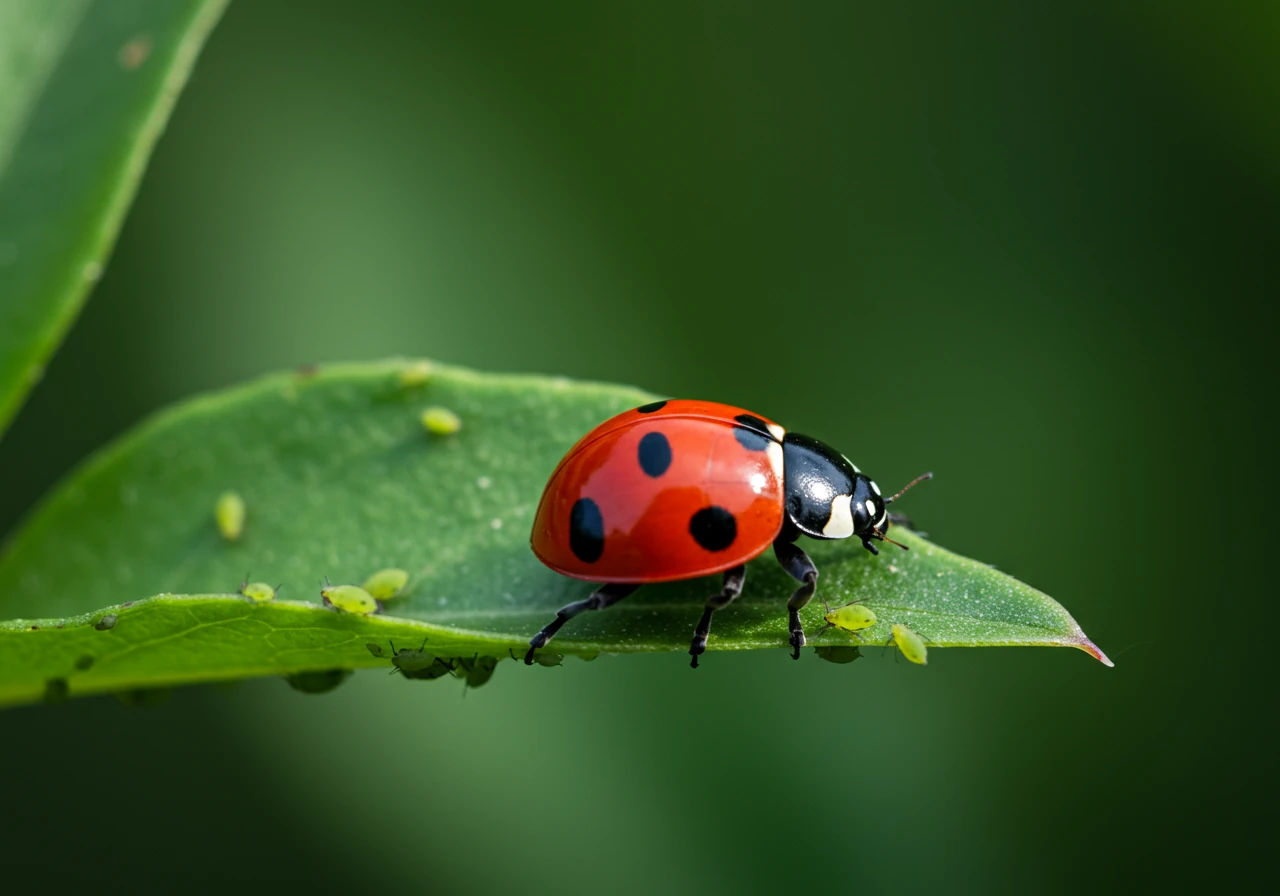
Okay, let's pull back the curtain on this "Integrated Pest Management" thing, or IPM as its friends call it. You might hear the term thrown around, but what does it *really* mean for your yard in, say, Barrhaven or right here in Kenmore?
Think of IPM less like waging all-out war on every bug that dares cross your property line, and more like being a smart, observant garden coach. In simple terms, IPM is a thoughtful, multi-step approach to dealing with pests (insects, diseases, weeds – the whole gang!) that focuses on long-term solutions and minimizing risks to people and the planet.
It’s quite different from the old-school way, which often involved grabbing the strongest chemical spray at the first sign of trouble. That approach can sometimes feel like using a sledgehammer to swat a fly – effective, maybe, but with potential side effects like harming beneficial insects (hello, helpful ladybugs and bees!), impacting soil health, or posing risks to pets and kids playing in the yard.
IPM flips the script. It’s about understanding the *why* behind the pest problem and using a combination of tactics. Here’s the basic game plan:
- Know Your Enemy (and Friends!): First, you need to correctly identify the pest *and* understand its habits. Is it actually causing significant damage, or just passing through? Are there beneficial bugs around that might eat the pests for you? Proper ID is key!
- Set Realistic Goals (Action Thresholds): IPM isn't about eliminating *every single* pest – that’s often impossible and unnecessary. Instead, you decide how much pest presence or damage you can tolerate before taking action. A few chewed leaves might be okay; a full-blown infestation might not.
- Prevention is Queen (or King!): This is a BIG part of IPM. It means making your yard less attractive to pests in the first place. Think:
- Choosing plants suited for Ottawa's climate and your specific yard conditions – understanding your garden's microclimates is super helpful here.
- Keeping plants healthy and strong through good practices like proper spring lawn fertilizing and considering a proactive plant healthcare plan to reduce stress. Healthy plants are naturally more resistant!
- Improving soil health. Happy soil = happy plants = fewer problems. Explore good soil preparation techniques.
- Using good sanitation – cleaning up fallen fruit, diseased leaves, and debris removes potential pest hangouts. Our thorough Kenmore yard cleanup service can definitely help with this! See also our work in nearby areas like Metcalfe yard cleanup and Marionville yard cleanup.
- Cultural practices like rotating crops in veggie gardens or trying fall plant division for healthier gardens to rejuvenate perennials.
- Control (Smartly): If prevention isn't enough and pests cross your tolerance threshold, IPM uses a hierarchy of control methods, starting with the lowest impact:
- Cultural Controls: Changing watering habits, adjusting mulch levels via services like mulching and edging.
- Physical/Mechanical Controls: Hand-picking bugs (gross, but effective!), using traps, barriers, or water sprays.
- Biological Controls: Introducing or encouraging natural enemies (like ladybugs for aphids).
- Chemical Controls: Used as a *last resort*, selecting the most targeted, least toxic option and applying it carefully only where needed.
Why is IPM Perfect for Ottawa Yards?
Our region, from the clay soil common in some Nepean areas to the sandier loams found near Manotick, presents unique challenges. Our humid summers can encourage fungal diseases, while specific insects thrive in our climate. IPM helps because:
- It's Adaptable: IPM isn't rigid; it adjusts to our specific pests and conditions.
- It Protects Our Environment: With concerns about protecting the Rideau River watershed and local ecosystems, reducing chemical runoff is crucial. IPM prioritizes eco-friendly methods. We respect this in all our property clean up services.
- It Promotes Healthy Landscapes: By focusing on prevention and plant health, IPM leads to stronger, more resilient yards that look great naturally. See some amazing yard transformations we've achieved.
- It's Safer: Less reliance on broad-spectrum pesticides means a safer environment for families, pets, and beneficial wildlife. Learn more about us and our commitment.
Implementing IPM might sound like a bit more work initially, but it pays off with a healthier, more sustainable yard in the long run. And hey, if you need a hand getting started or managing existing pest pressures with an IPM approach, exploring options like our comprehensive landscaping services can provide the expertise you need! Check out what our clients say via estimate feedback.
Meet the Culprits
Summer in Kenmore often brings aphids (sap suckers), Japanese beetles (leaf skeletonizers), earwigs (night feeders), slugs/snails (slime trail chewers), and ants (often farming aphids). Knowing who they are is step one!
Your First Defense
Focus on prevention: Choose resistant plants, improve soil health (soil preparation is key!), water smartly (early morning), keep the yard clean (city yard cleanup service can help!), and use mulch effectively (mulching service).
Taking Action Wisely
If pests appear: Start with physical removal (water spray, hand-picking), encourage beneficial insects, and only use targeted, low-toxicity products like insecticidal soap as a *last resort*. Professional garden maintenance can incorporate these controls.
Meet the Unwanted Guests: Common Summer Pests in Kenmore & Beyond
Okay, let's meet the usual suspects – those critters that seem to think your beautiful Kenmore garden is their personal all-you-can-eat buffet! Summer brings warmth and growth, but unfortunately, it also rolls out the welcome mat for several common pests. Knowing who you're dealing with is the first step to showing them the door (gently, of course, remember our IPM approach!).
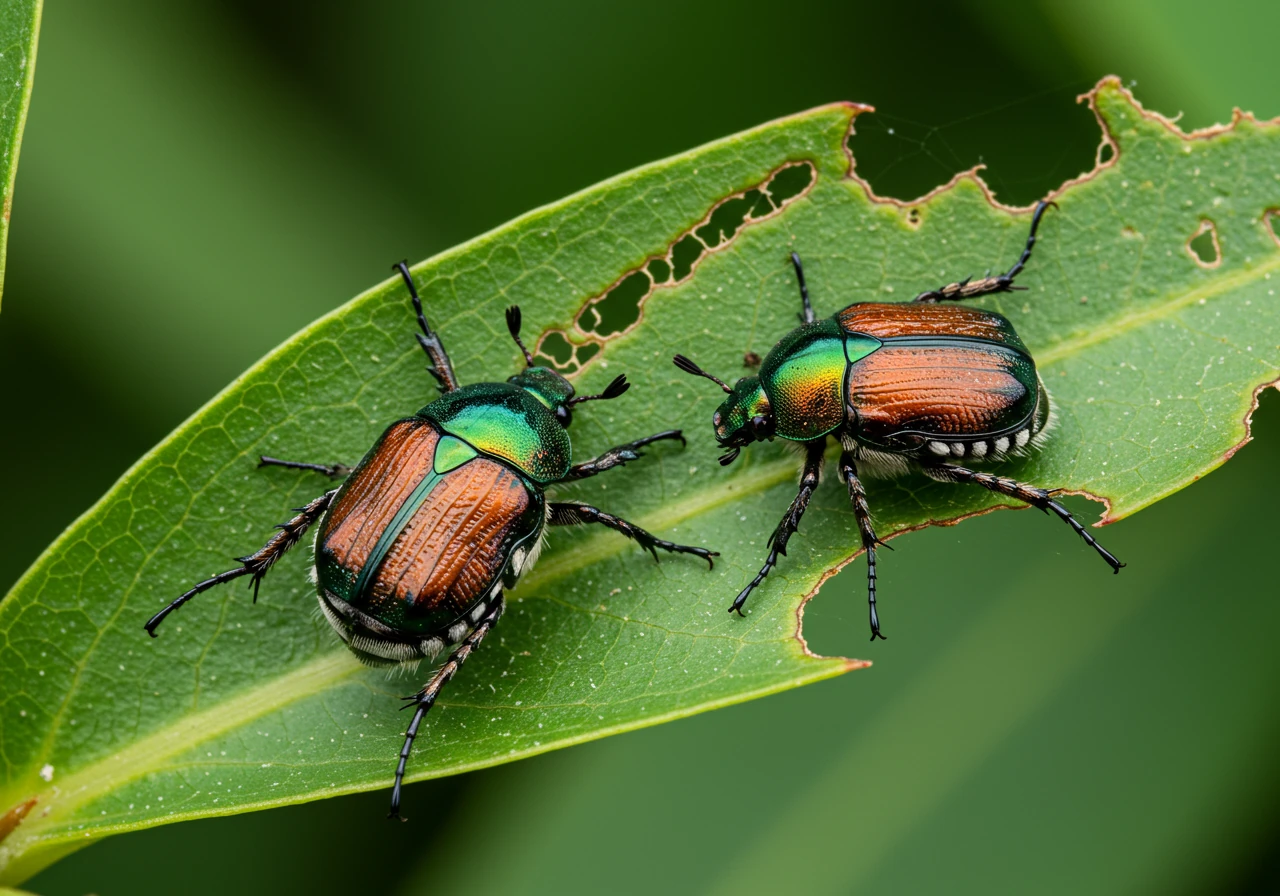
Here are some frequent flyers in Ottawa yards, from Nepean to Osgoode and right here in Kenmore:
- Aphids: These tiny, pear-shaped critters are the freeloaders of the insect world. They come in various colours (green, black, yellow, pink) and love to hang out in clusters on tender new growth, buds, and the undersides of leaves.
- The Damage: They suck the sap right out of your plants, leading to yellowing, curling, or distorted leaves. As a parting gift, they leave behind a sticky substance called honeydew, which can attract ants (more on them later!) and lead to a black, fuzzy fungus called sooty mold. Yuck.
- Timing: They can show up early in the summer and stick around if conditions are right.
- Japanese Beetles: Ah, the shiny gangsters of the garden. These metallic green and copper beetles are pretty easy to spot. They arrive hungry and often feed in groups.
- The Damage: They are notorious "skeletonizers," meaning they munch away the soft leaf tissue between the veins, leaving behind a lace-like skeleton. Roses, grapevines, birch trees, and beans are some of their favourites, but they aren't overly picky! Their damage can look quite dramatic very quickly.
- Timing: Peak season is usually mid-summer, often starting in late June or early July and lasting several weeks.
- Earwigs: These guys look tougher than they usually are, with those distinctive pincers on their back end (don't worry, they rarely actually pinch people!). They are reddish-brown, elongated insects that love dark, damp places.
- The Damage: They are night feeders and can chew irregular holes in soft leaves (like basil or zinnias) and flower petals. Often, they hide under mulch, pots, or garden debris during the day. Keeping things tidy is key; a thorough yard cleanup in Kenmore can really reduce their hiding spots. Similar cleanup help is available through Metcalfe property cleanup services if you're in that neck of the woods.
- Timing: Active throughout the warm summer months, especially when moisture is present.
- Slugs and Snails: The slimy squad! Whether they have a shell (snails) or go homeless (slugs), these mollusks glide around leaving tell-tale shiny trails.
- The Damage: They chew ragged, irregular holes in leaves, stems, and even fruits, favouring tender foliage close to the ground. Hostas are practically a delicacy for them. Like earwigs, they thrive in moist conditions and hide during the day. Reducing excess moisture and debris via professional property clean up is a good defense. Residents nearby can find that similar help is available with Marionville property cleanup.
- Timing: Active during damp periods throughout spring and summer, especially overnight or after rain.
- Ants: While not always directly damaging plants (except maybe disturbing soil around roots), ants can be a major nuisance on patios, walkways, and sometimes in lawns.
- The Issue: Their presence often indicates another problem. For instance, they love aphid honeydew and will actually "farm" aphids, protecting them from predators! Seeing lots of ants on a plant often means aphids are nearby. They can also make nests in lawns or garden beds, disrupting roots. Tackling pests is part of the journey – you can see some amazing yard transformations where pest issues were likely addressed along the way. You can find us on Google My Business for reviews and location info.
- Timing: Persistent throughout the summer.
Identifying these common guests is crucial. Sometimes, even making smart material selection for landscaping, like choosing pest-resistant plant varieties or specific types of mulch, can help minimize problems from the start. Keep an eye out, know what you're looking for, and you'll be better prepared to manage your landscape effectively!
Common Pest Sightings (Example Kenmore Data - July)
Note: Percentage indicates estimated yards experiencing noticeable presence. For illustration purposes only.
Your Summer IPM Game Plan: Prevention & Early Detection
Okay, let's roll up our sleeves and talk about the *smart* way to handle summer pests: stopping them before they even think about crashing your garden party! This section is all about your IPM game plan, focusing on prevention and catching troublemakers early. Think of it like being a friendly neighbourhood watch captain, but for your yard.
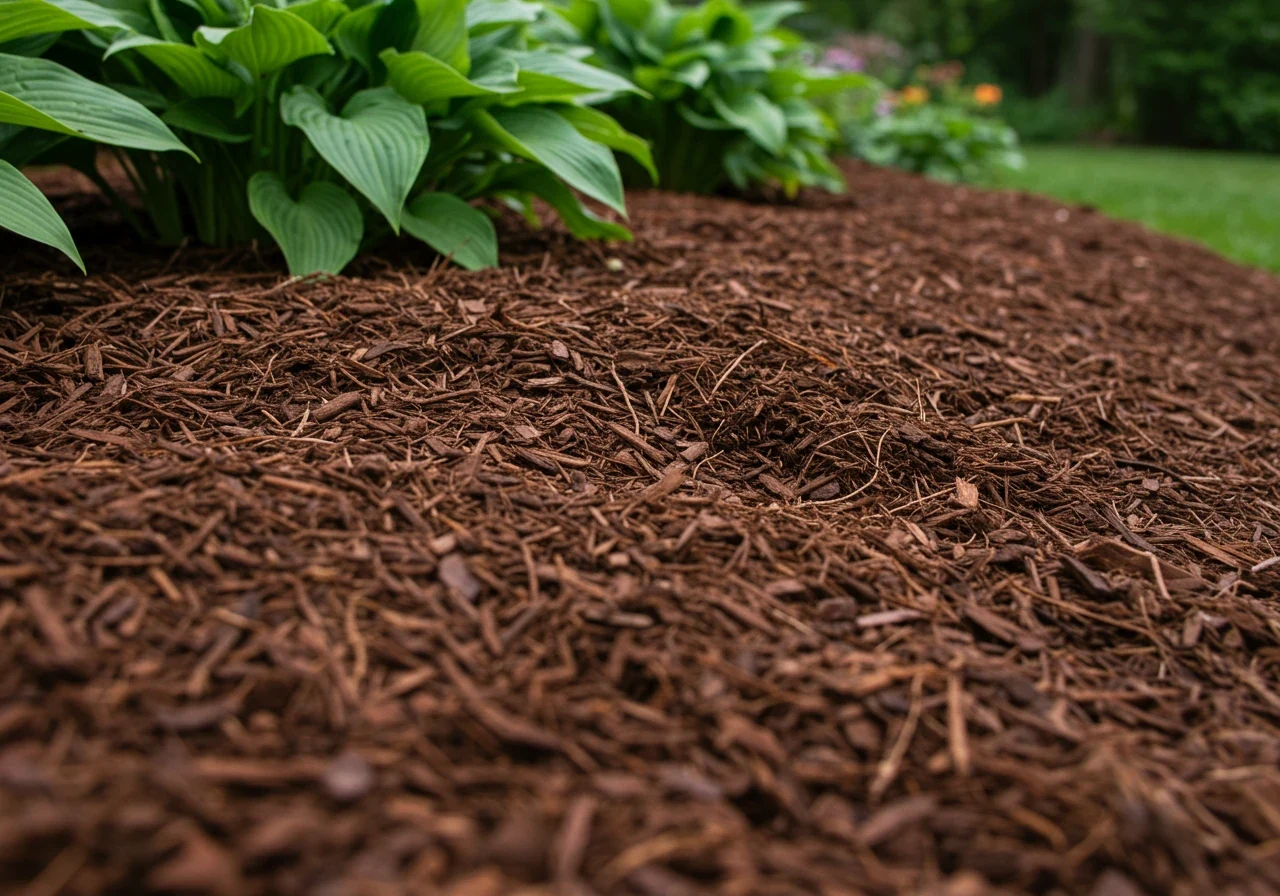
Prevention: Your Yard's First Line of Defense
Honestly, the best way to deal with pests is to make your yard less inviting to them in the first place. An ounce of prevention is truly worth a pound of cure (and maybe less frantic bug squishing!). Here’s how to build up those defenses, keeping our lovely, but sometimes challenging, Ottawa climate in mind:
- Smart Watering: Pests and diseases often love damp conditions. Water your lawn and gardens deeply but less frequently, rather than shallow sips every day. Aim for early morning watering so leaves can dry out before evening. Water at the base of plants, not all over the leaves – especially important during our humid summers to discourage fungal diseases.
- Lawn Love: Keep your grass cut a little higher (around 3 inches). Taller grass blades shade the soil, keeping it cooler and retaining moisture better, which helps choke out weeds and makes the lawn more resilient. If your lawn looks patchy or stressed, making it vulnerable, sometimes starting fresh is best. For major lawn overhauls, exploring options like professional sod installation services can give you a healthy, dense lawn that’s naturally better at resisting problems.
- Mulch Magic: Applying a layer of organic mulch (like shredded bark) in your garden beds does wonders. It helps keep moisture in the soil, suppresses weeds (less competition for your plants!), and keeps soil temperatures more even. Bonus: some pests don't like crawling over certain mulches. Just don't pile it too thickly against plant stems, as that can cause rot. Our mulching and edging services ensure proper application.
- Cleanliness is Key: Pests love hiding and overwintering in dead leaves, fallen fruit, and garden debris. Regularly tidying up eliminates these hideouts. This is especially important in the fall, but a good summer tidy-up helps too! If the task feels overwhelming, especially on larger properties like some you might find out in Richmond, consider getting help. Services like a dependable city yard cleanup service or a more focused city garden clean up service can make a huge difference. Don't forget, general tidiness across your whole space matters, which is where a comprehensive city property cleanup service comes in handy.
- Give Plants Space: Good air circulation is your friend! When planting, give your flowers, shrubs, and veggies enough room to grow without crowding each other. This helps leaves dry faster and makes it harder for diseases to spread.
- Choose Wisely: This is huge! Select plants that are well-suited to your specific conditions (sun, shade, soil type – Ottawa often has heavy clay!). Native plants are often a great choice as they're adapted to our local climate and pests. Look for varieties specifically bred for disease or pest resistance. Making thoughtful material selection for a healthier landscape from the start can save you headaches later.
Early Detection: Become a Garden Detective
Even with the best prevention, some pests might still show up. Catching them early makes dealing with them *much* easier.
- Take Regular Strolls: Make it a habit (maybe once or twice a week) to walk around your yard and *really look* at your plants. Don't just glance – peek under leaves, check stems, look at new growth. Notice anything different?
- Know What to Look For: Are leaves yellowing, spotted, chewed, or sticky? Are there visible bugs, eggs, or weird growths? Familiarize yourself with the common pests mentioned earlier.
- Act Fast (But Smartly): See a few aphids? A strong spray of water from the hose might be enough. Find Japanese beetles? Knock them into a bucket of soapy water in the cool morning. Early, low-impact actions are central to IPM.
- Keep Notes (Optional, but helpful!): Jot down what you see, where, and when. This helps you spot patterns year after year. Maybe you notice aphids always show up on one specific shrub first. Planning next year's strategy becomes easier – perhaps you need professional advice? You can see how we help others plan by checking out feedback on our landscape estimates.
Simple Summer IPM Checklist:
- Ongoing: Monitor plants weekly, water deeply when needed (mornings!), keep weeds down, remove any obviously diseased leaves immediately.
- Early Summer (June): Apply mulch, watch for aphids and slugs, check for Japanese beetle grubs if they were bad last year.
- Mid-Summer (July): Peak Japanese beetle season – monitor daily if needed! Keep watering consistently during dry spells. Deadhead flowers to encourage more blooms and remove potential pest spots.
- Late Summer (August): Continue monitoring. Watch for powdery mildew on susceptible plants (like phlox or squash) especially if it's humid. Keep tidying debris.
By combining these preventative habits with regular monitoring, you'll be well on your way to a healthier, happier yard with fewer uninvited guests this summer! Consider external resources like the City of Ottawa's wildlife page or the Rideau Valley Conservation Authority for more local environmental info.
Seasonal IPM Timeline (Example)
Prevention & Monitoring Kick-off
Apply mulch (mulching & edging). Start weekly plant inspections. Watch for early arrivals like aphids & slugs. Ensure proper spring fertilizing is done.
Peak Pest Season Action
Monitor daily for Japanese beetles if prevalent. Continue regular watering. Hand-pick pests or use water sprays. Deadhead spent flowers. Consider a mid-season garden clean up if needed.
Vigilance & Disease Watch
Keep monitoring pests. Watch for powdery mildew in humid weather. Improve air circulation if needed. Continue removing debris. Plan for fall prep.
Clean-up & Preparation
Major garden cleanup is crucial (Ottawa yard cleanup). Remove diseased plants. Consider plant division. Reduce overwintering sites for pests.
Taking Action: Smart & Safe IPM Control Tactics
Okay, so you’ve done your detective work, kept your yard tidy, and *still* some pesky critters have decided your place is party central. It happens! When prevention isn’t quite enough, your IPM game plan moves into *action*. But instead of reaching for the big guns right away, we use a layered approach, like peeling an onion (hopefully without the tears!). We start with the gentlest methods first. Think of it as escalating negotiations, bug-style.
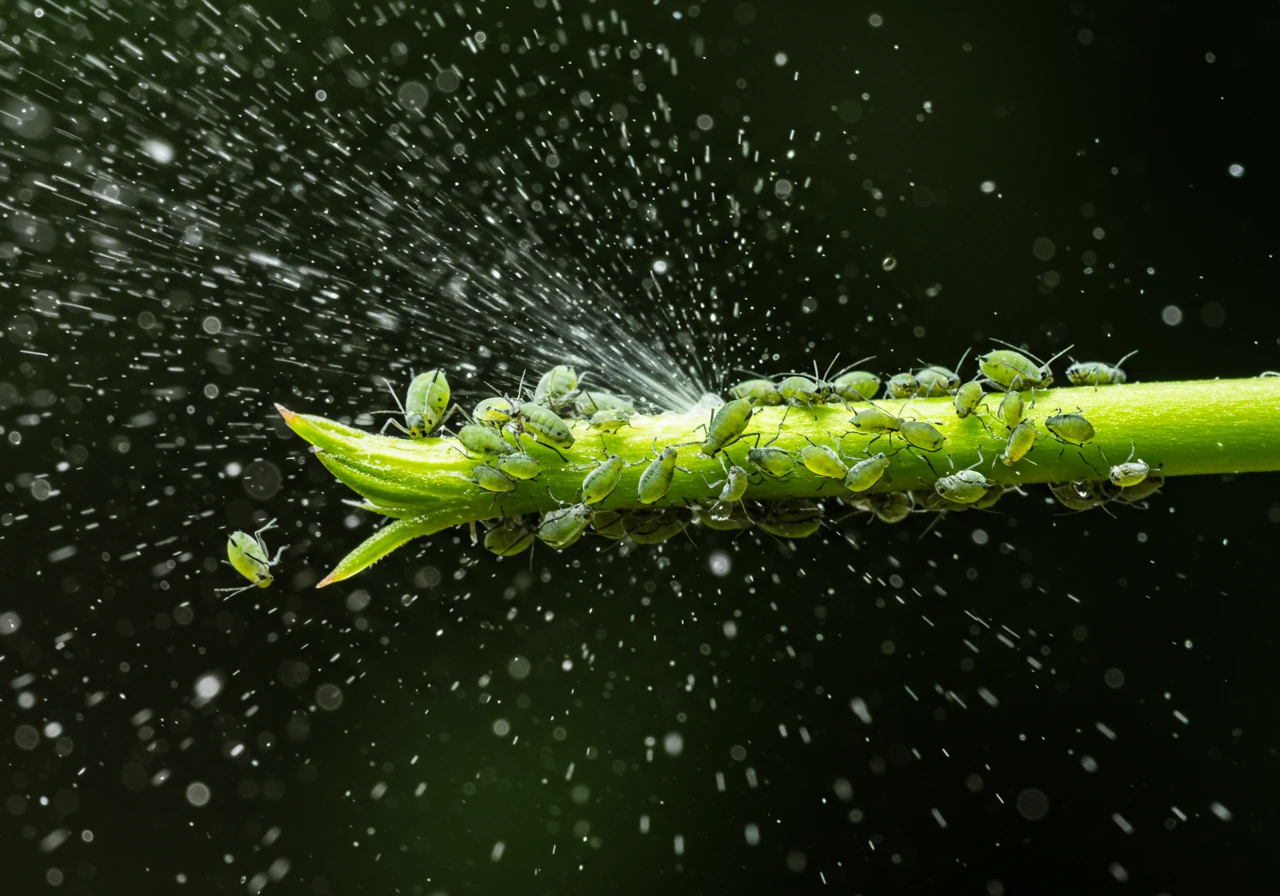
Here’s how we tackle pests smartly and safely, using the IPM hierarchy:
- Cultural Controls: Changing the Scenery
This is all about tweaking *how* you care for your garden and lawn to make life difficult for pests. It’s often simple stuff!
- Example: Slugs loving your hostas? Try watering early in the morning so the soil surface dries out by nightfall, making their slimy commute less pleasant.
- Example: Got fungal leaf spots appearing after humid Ottawa weather? Prune some lower branches or thin out dense foliage to improve air circulation. Sometimes, just adjusting your routine garden maintenance practices can make a big difference.
- Example: Rotating where you plant certain veggies each year can disrupt pests that overwinter in the soil.
- Physical & Mechanical Controls: Hands-On Bug Busting
Time to get a little more direct, but still non-chemical. This involves physical barriers or removal.
- Example: Those shiny Japanese beetles easy to spot? In the cool morning, knock 'em into a bucket of soapy water. Satisfying, in a slightly morbid way!
- Example: Aphids clustering on new shoots? A strong blast of water from the hose can dislodge many of them. Easy peasy.
- Example: Earwigs hiding everywhere? Lay down rolled-up damp newspaper or cardboard tubes at night; they’ll crawl inside, and you can dispose of them in the morning. Removing potential hiding spots through a thorough ottawa garden clean up service also falls partly into this category. We offer similar thoroughness in Metcalfe and Marionville garden clean up.
- Example: Use row covers over vulnerable veggies early in the season to physically block pests.
- Biological Controls: Calling in the Cavalry
This is where we use nature against itself – encouraging the "good bugs" that prey on the "bad bugs."
- Example: Ladybugs are aphid-eating machines! Planting things that attract beneficial insects (like dill, fennel, or yarrow) invites them to your yard.
- Example: Pesky grubs damaging your lawn? Applying beneficial nematodes (microscopic worms that attack grubs) can be very effective. This ties into overall good lawn care practices to ensure the nematodes have the best chance to work.
- Learning more about us and our commitment to sustainable landscaping shows how we value these eco-friendly approaches.
- Chemical Controls: The Very Last Resort
Okay, sometimes, despite your best efforts, a pest problem gets out of hand and threatens the health of your prized plants. *Only then* do we consider chemicals, and even then, we tread carefully. In communities like Kars or Embrun, where folks often value a connection to nature, minimizing chemical use is usually preferred.
- Choose Wisely: If chemicals are needed, always start with the least toxic, most targeted options first, like insecticidal soaps or horticultural oils. These often work by smothering insects and have less impact on beneficials than broad-spectrum pesticides.
- Spot Treat: Apply *only* where the pests are, not blanket-spraying the whole yard. Read and follow the label instructions *exactly* – it's the law, and it’s for safety! Always adhere to guidelines, just as we outline in our terms and conditions and protect user info per our privacy policy.
- Consider Timing: Avoid spraying when bees are active (usually midday) or when it's windy.
- Get Advice: If you're facing a tough pest situation and considering chemical options, it's often best to get professional advice. Don't hesitate to contact us to discuss safe and effective solutions tailored to your Ottawa yard. We appreciate you saying thank you by trusting our expertise.
By using this IPM hierarchy, you tackle pest problems thoughtfully, protecting your plants while minimizing risks to yourself, your family, pets, and the local environment. It’s about smart, safe, and sustainable pest management!
Kenmore IPM Quick Tips: Your Go-To Guide!
Feeling a bit overwhelmed? No worries! Here’s a quick cheat sheet with the core ideas of Integrated Pest Management to keep your Kenmore garden looking great, naturally. Think of this as your IPM pocket guide!
- Prevention is Priority #1: Happy plants are tough plants! Focus on building healthy soil, watering smartly (early morning is best!), choosing plants suited for our Ottawa climate, and giving them enough space to breathe. Healthy plants are less likely to attract pests in the first place, whether you're in Kenmore or nearby Osgoode.
- Play Detective Weekly: Get out there and scout! Regularly check your plants, especially under leaves and on new growth. Spotting pests early often means you can deal with them easily before they throw a major party.
- Tidiness Trumps Pests: Seriously, don't give bugs comfy homes! Clean up fallen leaves, weeds, and garden debris promptly. Fewer hiding spots = fewer pests. If the mess feels like too much, a thorough Ottawa garden clean up service can work wonders.
- Identify Before You Act: Not every bug is bad news! Make sure you know what you're dealing with. Is it a pest causing real damage, or a beneficial insect helping you out? We appreciate your efforts in learning the difference and protecting the good guys!
- Use the Gentle Touch First: Always start with the simplest, safest methods. Try hand-picking larger bugs (like Japanese beetles), using a strong water spray for aphids, or setting traps for earwigs. For larger scale tidiness that removes pest habitats, consider options like a reliable Ottawa property cleanup service, offering help across the region with approaches sometimes extending to property cleanup similar to Marionville services in thoroughness.
- Chemicals are the LAST Resort: If pests cross the line and other methods fail, *then* consider targeted, low-impact products like insecticidal soap. Always, always read and follow the product label instructions to the letter – it’s crucial for safety and effectiveness (just like you’d carefully review our terms and conditions before starting a service!). Spot-treat only the affected area.
Your Ottawa IPM Questions Answered (FAQ)
Absolutely! Safety is a huge plus with IPM. The whole idea is to use non-chemical methods first, like smart gardening habits, hand-picking bugs, or encouraging natural predators. Chemicals are only considered as a last resort, and even then, the least toxic, most targeted options are chosen. It’s all about keeping your yard healthy *and* safe for everyone enjoying it.
Yes, but think long-term! While a strong spray gives quick knockdown, pests often return. IPM focuses on preventing problems and using multiple tactics (like traps, hand-picking, and maybe even selecting tougher plants during new garden installations) for lasting control. It builds a healthier yard that's naturally less attractive to pests over time, which is often more effective in the long run.
Definitely! Healthy plants resist pests better, and good soil is key. IPM includes improving your specific conditions. For heavy clay like yours, focusing on boosting soil health through adding organic matter and employing good soil preparation techniques makes a huge difference. Stronger plants mean fewer pest problems, even in challenging soil.
You can totally do DIY IPM! Start small – regular monitoring and basic prevention (like keeping things tidy) go a long way. However, if you're short on time or facing a tricky pest issue, professionals can help implement a plan efficiently. Tasks like a major seasonal tidy-up can be handled by an Ottawa yard cleanup service, freeing you up. When contacting pros, ensure they respect your data; reputable companies will have a clear privacy policy.
Great question! Your very first step is always identification. Try to figure out exactly what pest or disease you're seeing. Is it aphids? Black spot? Knowing your opponent guides your next moves. Sometimes, the 'problem' might just be environmental stress, or the solution might be as simple as removing affected leaves or cleaning up debris where pests might hide – similar to the thoroughness of a Metcalfe yard cleanup service tackling hiding spots.
Conclusion: Enjoy a Pest-Resistant Summer in Your Kenmore Yard!
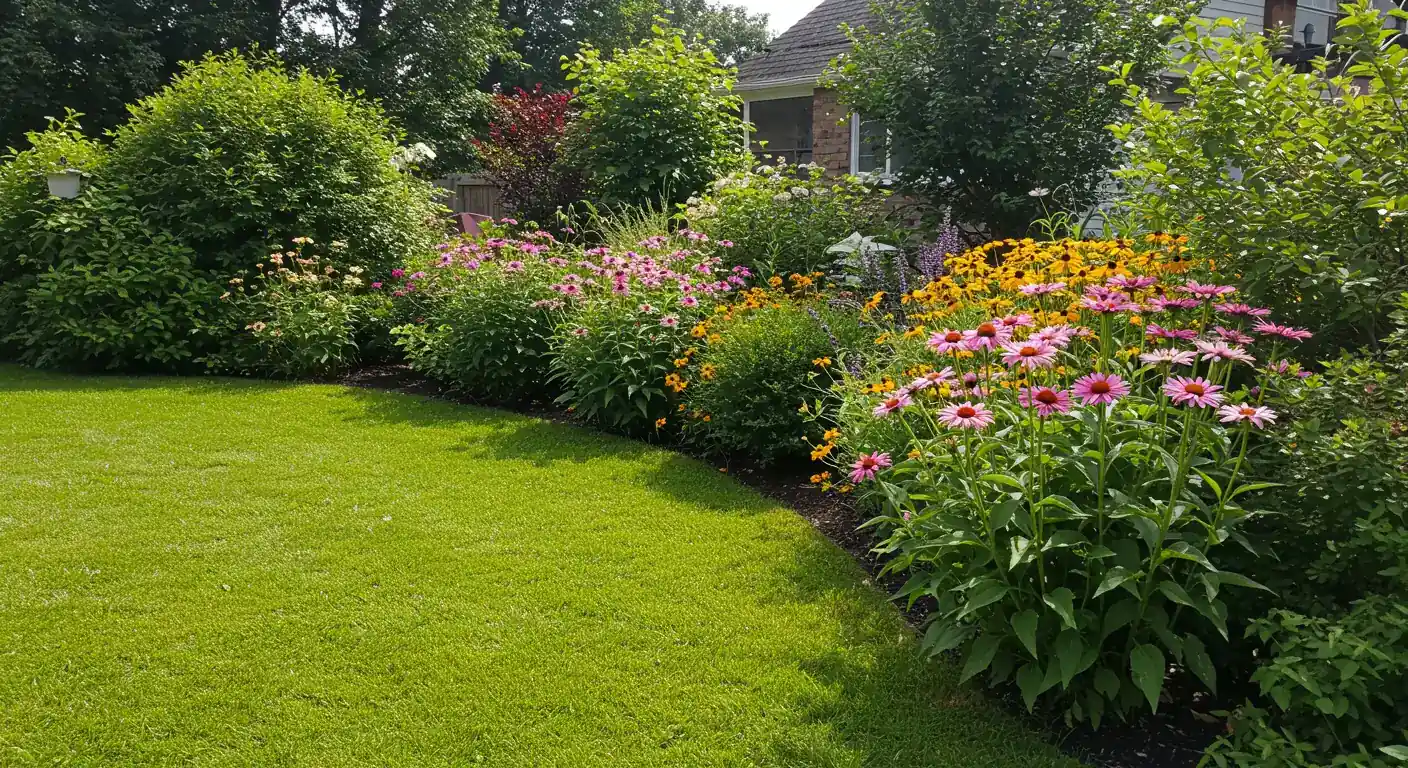
Okay, let's wrap this up! Creating a pest-resistant paradise in your Kenmore yard doesn't mean waging chemical warfare or spending your summer swatting everything that moves. As we've explored, Integrated Pest Management (IPM) offers a smarter, friendlier, and more sustainable approach. Think of it as becoming a clever garden manager rather than just a bug squisher! By focusing on prevention – like building healthy soil, choosing appropriate plants for our Ottawa climate, and practicing good garden maintenance – you create beautiful landscaping that pests naturally find less appealing. It’s about working *with* nature, promoting a healthier yard for your family, pets, and the local environment, whether you're right here in Kenmore, or enjoying your space in nearby areas like Russell or Metcalfe.
You absolutely have the power to reduce pest pressures! Even incorporating one or two IPM strategies, like improving your lawn care practices or simply taking a weekly walk to scout for problems, makes a real difference. It's empowering to know you're using effective, responsible methods to keep pests from spoiling your outdoor fun. You're essentially telling those pesky critters, "Sorry, party's cancelled!"
Ready to take the next step towards a more enjoyable, pest-smart summer?
- Give it a try! Choose one simple preventative tip – maybe adjusting your watering schedule or committing to weekly plant checks – and implement it this week. Small changes add up!
- Need a helping hand? If you're facing persistent pest problems or simply want expert support in creating a healthier yard, get in touch with us! We provide comprehensive landscaping and garden maintenance services grounded in IPM principles throughout Kenmore and the wider Ottawa region. Request your free, no-obligation estimate today and let's work together to make your yard resilient and beautiful.
Here’s to a fantastic summer spent relaxing and enjoying your lovely Kenmore yard – with significantly fewer uninvited guests!

